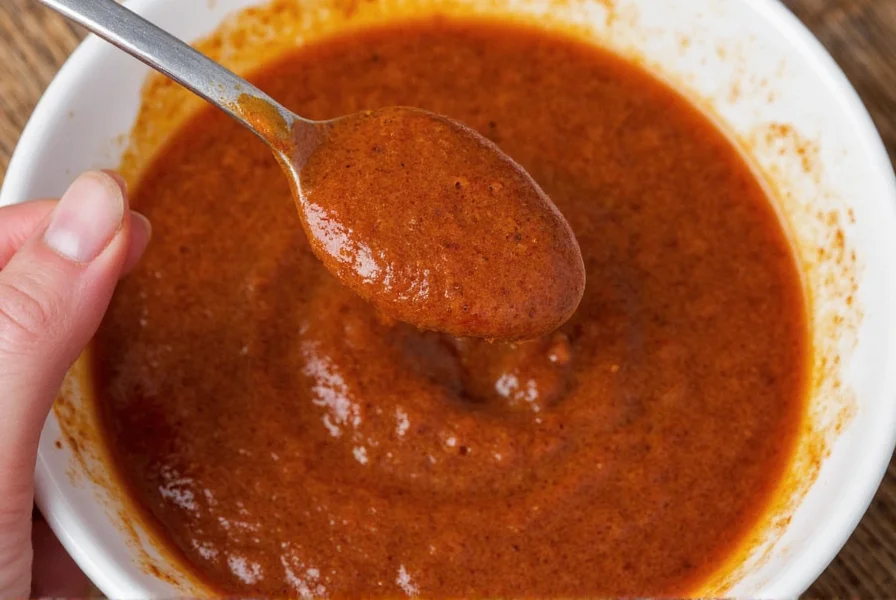Adobo sauce is a versatile condiment with two distinct cultural origins: Filipino and Mexican. Filipino adobo is a braised dish made with soy sauce, vinegar, garlic, and peppercorns, while Mexican adobo is a smoky, spicy sauce made from tomatoes, chili peppers, and spices. This guide explains both types, their uses, and how to choose the best adobo sauce for your kitchen.
Table of Contents
- The Spicy Roots of Adobo Sauce
- Global Twists on a Classic Condiment
- Top 10 Creative Uses of Adobo Sauce in Your Kitchen
- Buying Guide: How to Choose the Best Adobo Sauce
- Frequently Asked Questions About Adobo Sauce
- Conclusion: Make Every Meal an Adobo Adventure
The Spicy Roots of Adobo Sauce
The word "adobo" comes from Spanish, meaning a marinade or sauce used to preserve meats before refrigeration. While Filipino and Mexican cuisines have distinct interpretations, both use vinegar-based preservation techniques that evolved into beloved flavor profiles worldwide.
Philippines: Adobo as National Comfort Food
In the Philippines, adobo is a cooking method where meat (typically chicken or pork) is braised in a sauce of soy sauce, vinegar, garlic, and black peppercorns. It's savory, salty, and slightly sour—perfect for balancing tropical flavors. This dish is considered the national cuisine of the Philippines.
Mexico: Smoky Heat in Every Bottle
Mexican adobo sauce is a rich, reddish-brown sauce made from tomatoes, dried chili peppers (often chipotle), vinegar, cumin, and oregano. It's commonly used in canned chipotle peppers and adds deep, smoky heat to dishes like tacos, stews, and grilled meats.
| Region | Main Ingredients | Flavor Profile | Common Use |
|---|---|---|---|
| Philippines | Soy sauce, vinegar, garlic, peppercorns | Savory, salty, slightly sour | Braised chicken or pork |
| Mexico | Tomatoes, chili peppers, vinegar, cumin | Smoky, spicy, sweet-sour | Marinades, salsas, canned chipotles |
Global Twists on a Classic Condiment
Adobo sauce has inspired innovative reinterpretations worldwide:
- Texas BBQ Adobo: Infused with smoked paprika and molasses for sweet-tangy depth.
- Japanese Fusion Adobo: Combines miso paste with traditional ingredients for umami richness.
- Peruvian-Inspired Adobo: Adds aji amarillo peppers for fruity heat and vibrant color.
- Korean Gochujang Adobo: Blends fermented gochujang for spicy, earthy complexity.

Top 10 Creative Uses of Adobo Sauce in Your Kitchen
Adobo sauce transforms ordinary meals into extraordinary dishes:
- Pizza Perfection: Replace tomato sauce with adobo for a bold base with pepperoni or roasted veggies.
- Grilled Cheese Upgrade: Mix into mayonnaise for a spicy, smoky sandwich spread.
- Marinate Everything: Coat chicken, tofu, or shrimp for 30 minutes before cooking.
- Stir-Fry Boost: Add a splash for instant complexity and warmth.
- Avocado Toast Revamp: Drizzle over avocado toast with fried egg and pickled jalapeños.
- Dip Delight: Combine with Greek yogurt for a creamy, spicy dip.
- Eggs with Zing: Stir into scrambled eggs or drizzle over shakshuka.
- Rice Flavor Hack: Mix into cooked rice or use as a side sauce for burritos.
- Popcorn Popper: Toss warm popcorn with melted butter and adobo for fiery snacks.
- Cocktail Rim Magic: Dip glass rims into lime juice then adobo powder blend.

Buying Guide: How to Choose the Best Adobo Sauce
Key factors for selecting adobo sauce:
- Heat Level: Mild to extra-hot varieties available.
- Smokiness: Chipotle or smoked paprika for campfire flavor.
- Acidity: Vinegar-heavy vs. tomato-based for balance.
- Ingredients: Minimal additives for purer flavor.
| Product | Features | Best For | Flavor Highlights |
|---|---|---|---|
| Vietti Chipotle Adobo | Thick, smoky, chunky texture with whole chipotle peppers | Grilling, marinades, taco toppings | Robust, earthy, lingering heat |
| La Costeña Adobo Salsa | Smooth, slightly sweet, medium spice | Everyday use, enchiladas, dips | Tomato-forward, balanced acidity |
| Maggi Filipino-style Adobo Seasoning | Ready-to-use seasoning mix with garlic, soy, vinegar | Quick chicken or pork adobo prep | Salty, garlicky, subtly tangy |
| Taco Bell Fire Sauce | Mild heat, ketchup-like base with adobo undertones | Kids, casual eaters, dipping | Sweet, spicy, familiar fast-food kick |
Who Should Buy What?
- Home Cooks: Maggi Filipino Adobo Seasoning for foolproof results.
- Grill Masters: Vietti Chipotle Adobo for authentic smoky edge.
- Weeknight Warriors: La Costeña for balanced flavor without extra effort.
- Kids & Casual Eaters: Taco Bell Fire Sauce as a milder gateway.
Frequently Asked Questions About Adobo Sauce
What exactly is adobo sauce?
Adobo sauce exists in two primary forms: Filipino adobo (a braised dish using soy sauce, vinegar, garlic, and peppercorns) and Mexican adobo (a smoky sauce made from tomatoes, chili peppers, vinegar, and spices). Despite sharing a name, they're distinct preparations with different ingredients and uses.
What's the difference between Filipino adobo and Mexican adobo sauce?
Filipino adobo is a cooking technique where proteins are braised in soy sauce, vinegar, garlic, and peppercorns, resulting in savory, salty, slightly sour flavors. Mexican adobo is a prepared sauce made with tomatoes, chili peppers, vinegar, and spices, known for its smoky, spicy, sweet-sour profile. They're culinary cousins but not interchangeable.
How long does adobo sauce last once opened?
Commercial adobo sauce lasts 1-2 weeks refrigerated. Homemade versions should be used within 7-10 days. For longer storage, freeze in ice cube trays for up to 6 months. Always use clean utensils to prevent contamination.
Can I make my own adobo sauce at home?
Yes! Mexican-style: Blend rehydrated dried chilies (guajillo, ancho), garlic, vinegar, cumin, oregano, and sugar. Filipino-style: Combine equal parts soy sauce and vinegar with minced garlic, black peppercorns, and bay leaves. Homemade versions avoid preservatives and let you control heat levels.
Is adobo sauce very spicy?
Spice levels vary. Mexican adobo (especially chipotle-based) ranges from medium to hot, while Filipino adobo relies on black pepper for mild heat. Check labels for heat indicators or start with small amounts.
What can I use as a substitute for adobo sauce?
For Mexican adobo: Mix tomato paste with smoked paprika, garlic powder, oregano, and vinegar. For Filipino adobo: Combine soy sauce with rice vinegar and garlic. Chipotle peppers can be substituted with smoked paprika plus cayenne.
Is adobo sauce gluten-free?
Traditional Mexican adobo is typically gluten-free, but check labels. Filipino adobo made with regular soy sauce contains wheat, but tamari (gluten-free soy sauce) works as a substitute.
Can I freeze adobo sauce?
Yes! Freeze in ice cube trays, then transfer to freezer bags. Properly stored, it maintains quality for up to 6 months. Thaw overnight in the fridge or add frozen cubes directly to cooking dishes.
How do I store leftover adobo sauce?
Store in an airtight container in the refrigerator. Commercial varieties last 1-2 weeks; homemade 7-10 days. Discard if mold, off smells, or unusual texture appear.
What dishes pair best with adobo sauce?
Mexican adobo works with grilled meats, roasted vegetables, rice bowls, and soups. Filipino adobo pairs with steamed rice and braised meats. Both enhance tacos, burritos, scrambled eggs, and even pizza sauce or sandwich spreads.
Conclusion: Make Every Meal an Adobo Adventure
Adobo sauce is more than a condiment—it's a culinary bridge connecting cultures through flavor. Whether enhancing a simple rice bowl, upgrading your grilled cheese, or recreating family recipes, adobo brings warmth, complexity, and joy to every bite.
Grab a bottle, experiment fearlessly, and remember: no meal is too basic with adobo sauce on your side. Happy cooking, spice lovers!










 浙公网安备
33010002000092号
浙公网安备
33010002000092号 浙B2-20120091-4
浙B2-20120091-4